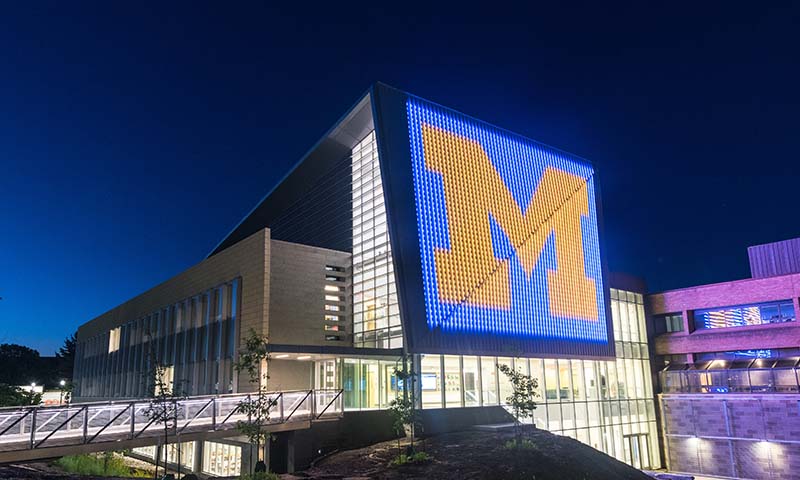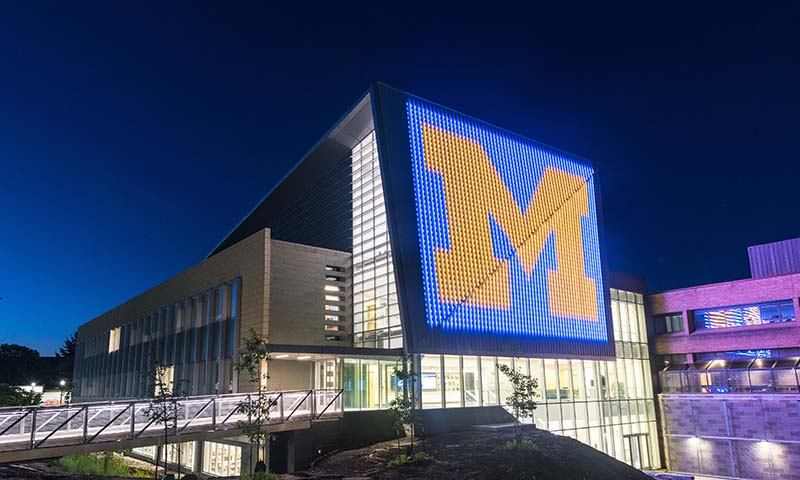

Mechanical Engineering provided pilot grants to three research/teaching proposals submitted by our faculty. These were our Teaching Innovation Pilot (TIP) and our Research Innovation Pilot (RIP) programs. For both RIP and TIP, we sought proposals that focused on sustainable, scalable innovations and clear practicality.
The goals for our TIP grant were to affect teaching on a grand scale, to explore opportunities to overhaul the lecture format, to integrate "campus of the future" concepts, to otherwise optimize faculty involvement for efficacy and efficiency, and to evolve pedagogically with alternative strategies for productive engagement with students through meaningful experiential learning activities. We especially sought an increase in impactful interactions with undergraduate students that would inspire them toward careers in research and that would prepare them for the workforce.
For our RIP grant, we sought proposals that would elevate ME faculty’s research to greater visible novelty and impactfulness, that would position our faculty to lead on larger research projects, and that would redouble our reputation in all areas called out by the mechanical engineering section of the NAE as rapidly evolving. We required a heavy mechanical engineering focus from RIP proposals and encouraged additional activities that would promote our grander research enterprise, that would promote the visibility of our faculty as thought-leaders shaping future investments in engineering, and that would infuse our research enterprise with new collaborations (especially within the Department), new approaches, and new tools.
Mechanical Engineering is pleased to present these progress reports. From the incorporation of VR technology into experiential learning for solid mechanics courses to a radically new desalination system to ground-breaking inquiry into thermoplastic diffusion bonding, the RIP/TIP grant programs have proven incredibly successful and offer exciting outlooks on the future of our Department’s initiatives.
Our project seeks to develop a novel electrochemical desalination system consisting of a hybrid flow cell, which itself consists of a redox-active liquid electrolyte and a solid chloride-converting, or chloride-intercalating, electrode on the other side. Our experiments so far have shed light on several important aspects of desalination using a hybrid flow cell:
In the remaining performance period of the project, we plan to evaluate the desalination performance of NaSICON-bearing hybrid flow cells at higher than ambient temperatures (30 – 70 °C).
The vision of this initiative is to bring personalized learning experience into mechanics education. The team focused on incorporating and promoting virtual reality and simulations as a teaching tool, and developed coordinated efforts as a teaching group to implement them into fundamental solid mechanics courses.
The team has completed system selection and setup, created various modules of virtual reality and simulations, and developed a plan for implementation and evaluation. A mobile external GPU setup has been implemented and validated for VR applications, which can adapt to various laptop systems by different instructors. Sixteen mechanical VR models, representative of key concepts, have been created. A systematic framework for content creation has been developed after comparing multiple 3D drawing programs. For instance, in Open Brush, the team member adapted selected ME211 lectures into 3D spaces. The typical day-to-day lecture format is a chalk-talk, constructed as a handwritten projected document in the iOS app Notability, and students receive a partially erased scaffold built from these notes before class. VR lecture modules were built in the same fashion, but as 3D environments. The lecture material was then made available as VR notes hosted on SketchFab for student exploration after lecture. In simulations, the team has developed a partnership with Altair. The team created simulation modules using Altair’s Inspire platform to show deformation, stress distribution and deflection of frames. Using a scripting tool to implement analytical results specifically for beam simulations, the team incorporated a beam module that allows students to explore beam stress and deflection calculation with various cross-sections and loading and boundary conditions.
Mechanism thermoplastic diffusion bonding, which is the topic of this RIP proposal, is critically important for the quality and productivity of additive manufacturing (AM) parts. On quality, the level of diffusion bonding and porosity of the interface layer determine the strength and durability of the AM parts. On productivity, a fundamental understanding of the diffusion mechanism is the start of innovations in thermoplastic AM processes. The goal of this proposal is to study the diffusion bonding of thermoplastic polymers in AM of fiber reinforced composites.
The setup for this experiment, which measures diffusion at the bonding of composite tapes through Automatic Fiber Placement Technology (AFP), is composed of two parts:
In the first 6 months, the Equipment which lays up the tapes and bonds them (AFP) was built so that it fits the space in the Synchrotron-computed tomograph. It was proven that the tapes are bonded in a continuous way. Also, the AFP equipment was designed with embedded thermocouples and sensors for in-situ measurement of the temperature and the displacement.
Initial tests for adjusting the scanning parameters were done and feedback was considered in designing the AFP equipment.
